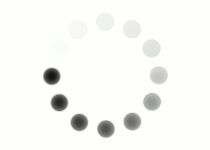After World War II, consumerism began to thrive again and there was an increased need for advertising and graphic design. One of the major factors in the Late Modern design style was the development of new photographic, typographic, and printing techniques. Designers had more control and flexibility with their work than they had in previous movements. Many designers used minimal elements; but those few elements were used in dynamic ways. There was a balance between the simple and the complex use of type, shapes, and photography.
Swiss designers used mainly type and photography; but placed them in a dynamic layout that created interest. They Psychedelic designers used shapes and high contrast colors to evoke emotions and intrigue. It was this simple variety the lead to the evolution of the Late Modern style into the Post Modern movement.



